
11+ Remuneration Policy Templates in PDF | Ms Word
Arrangements on a remuneration policy are significant reports made by associations crosswise over different fields for giving standards to moral…
May 02, 2024
A security policy is essential for safeguarding organizational information and addressing various security issues arising from data transfer, information sharing, network breaches, and more. By using security policy templates, companies can produce foolproof security policies to effectively minimize risks.
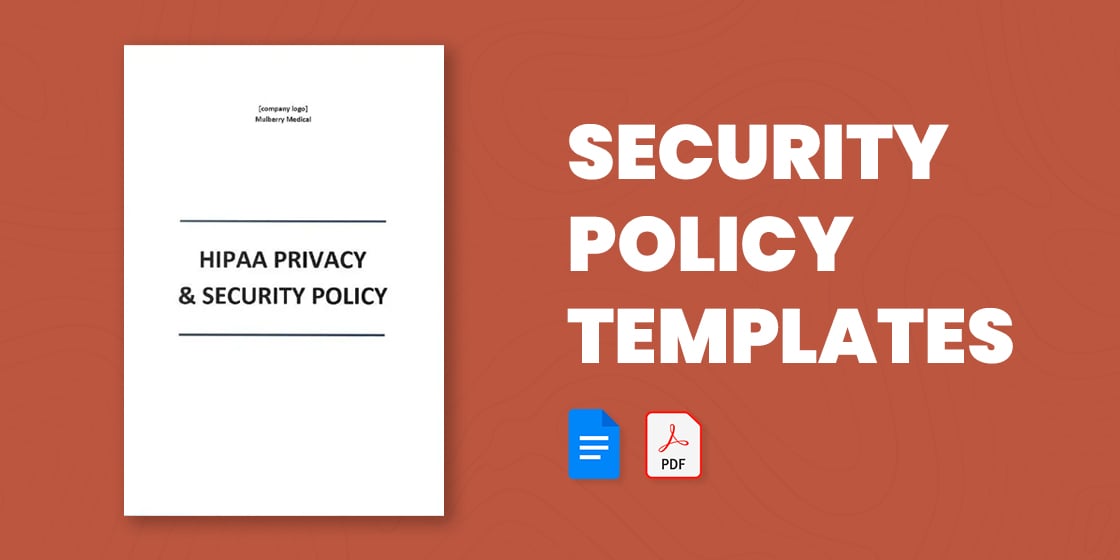
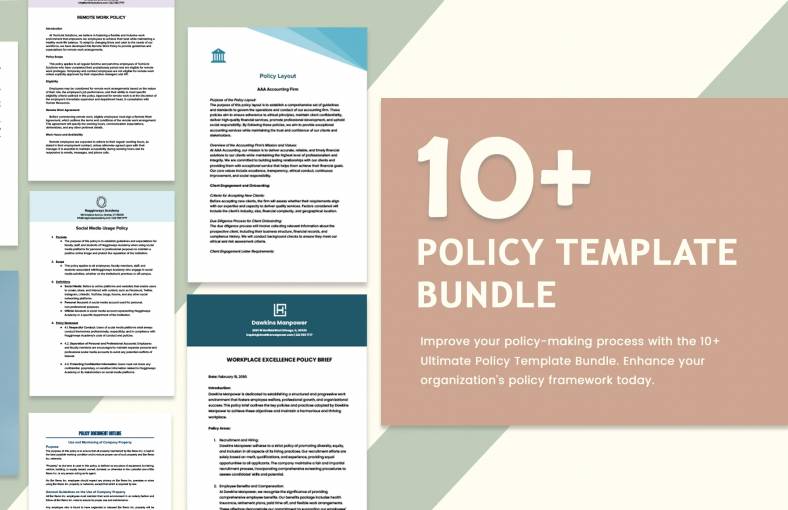
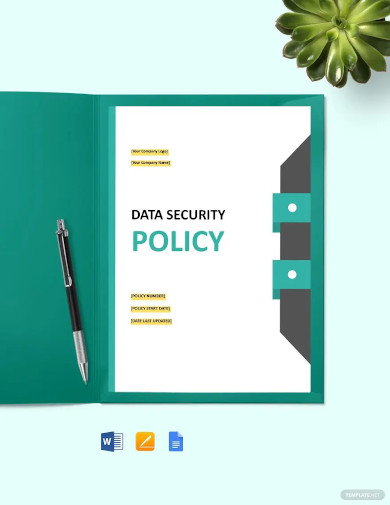
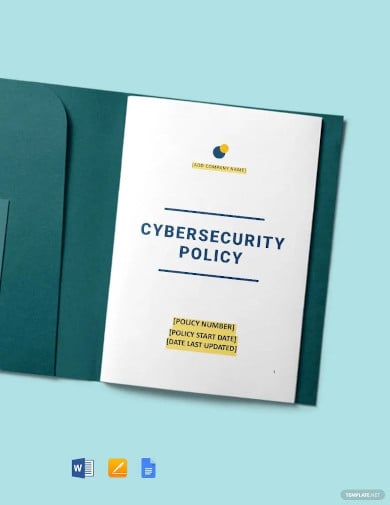
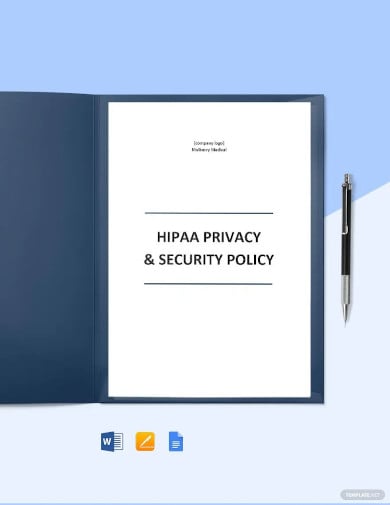
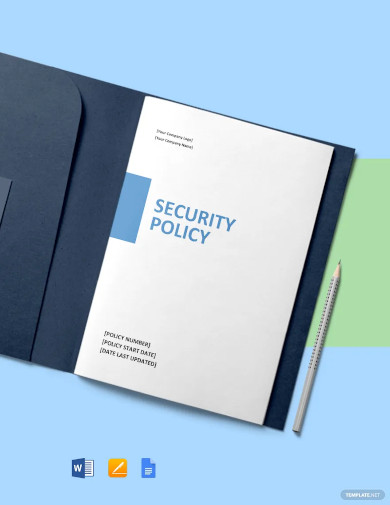
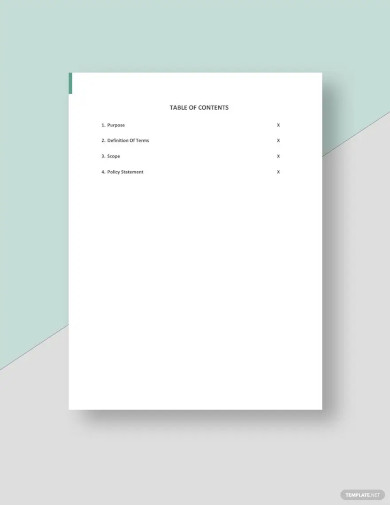
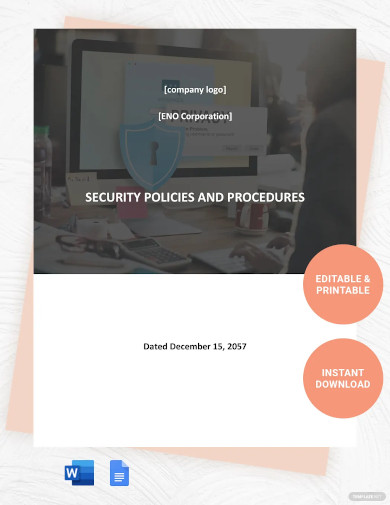
This information security professional policy template provides policies to protect information belonging to the university and its stakeholders. It derives policies for the staff and other persons who use the university facilities and the methods for safeguarding the information.
This data security policy format template provides policies about protecting information when using various elements like computers and servers, data backup, password security, usage of the internet, email usage, accessing information through remote access, using mobile devices, etc.
This network security policy template outline provides policies for protecting the confidentiality, integrity as well as accessibility of the network. It also institutes security accountability for network security. It describes the risk assessment of various network security elements.
This physical security simple policy format template provides policies to protect resources from any kind of accidental damage. It enables to identify and record security risks. It provides the implementation of safeguarding from risks at a reduced cost; you can also refer to a sample policy.
This corporate security policy template seeks to make sure the efficient safeguarding of persons, assets, and company capital. It also provides to design preventive security strategies that protect knowledge, professionals, and information.
A security policy encompasses explicit and thoroughly defined strategies, guidelines, outlines, and procedures governing access to an organization’s system and its associated information. Much like standard policies and procedures, a security policy ensures the protection of not only the organization’s data and systems but also the well-being of employees, safeguarding the organization as a cohesive unit.
The security policy will not give solutions to a problem, but it will allow you to protect your company assets, files, and documents. It will not only help your company grow positively but also make changes for the employees. It ensures a legal relationship between the company and an employee and saves your company from the problem of stealing valuable information. Not having a security policy can bring a lot of trouble for the company. If you are running a small business, having a security policy is a must because of the following reasons:
The benefits of security policy for any large organization are abundant. They protect the company’s information privacy policy and safeguard the information from getting leaked to competitors. They restrict the employees from taking pictures using mobile devices as well as accessing company information through networks by limiting access.
Similarly, sending information through email or taking data backups on personal devices is restricted. They help to protect assets from any damages and protect the staff from any physical threats. They also formulate policies with regard to digital signatures outlook, password protection, server security, equipment security, laboratory security, web application security, and many more.
A Security Policy Template contains a set of policies that are aimed at protecting the interests of the company. They safeguard hardware, software, network, devices, equipment templates, and various other assets that belong to the company. They also enable to record of breaches of security and help to mitigate them from further occurrences.
These documents provide policies to decide on the ownership of data, provide access to company employees, and many other controlling measures. They also enable to protect the organization legally from any sort of threats, provide risk assessment, and draft security policies effectively. They help the employees to follow ethics at the workplace and adhere to company policies.
Some of the significant reasons that prove just how important a security policy is are the following:
The Security policy template pdf is extensively utilized by varieties of organizations to protect their interests including their assets and resources. They are also called quality professional policy of the company which helps in drafting various quality rules and regulations. They come with tons of varieties and one can utilize them effectively and create security policies to safeguard the company.
In today’s evolving digital landscape, securing sensitive data and information has become a major concern for organizations. So be sure to draft a robust security policy in just five steps and use a sample template as instructed below: Looking for more insights? Dive into our blog post about employee policy templates.
Conduct a thorough assessment of your organization’s security vulnerabilities as well as potential threats. And you can do this by collaborating with stakeholders and experts. Determine the key security objectives and create a comprehensive scope covering all important areas to build an efficient security policy that leaves no gaps in protection. Interested in learning more? Click here to read about corporate policy templates on our website.
From the many security policy templates mentioned above in this article, select the specific template that you want to use, such as the best option that fits your security policy goals or purpose. Just click the “Download” button, choose your preferred file format, and edit the format, design, and layout afterward. For additional resources, explore our library of articles on company policy templates. These templates have premade information that you can stick with but you can also change them for customization.
Each company has its own unique plan of security measures may it be about access controls, password policies, data encryption, incident response processes, and employee training guidelines. Personalize the measures to suit the specific needs of your company while also adhering to the industry’s best practices and compliance standards. To discover the latest trends in university policy templates, browse our recent posts on the subject. Be sure to alter the default guidelines from the template because you would need to insert original business names, contact info, and other data.
Effective communication is a must for the successful implementation of a solid security policy. Clearly articulate the policy to all employees until they understand their duties and responsibilities in maintaining security. For a deeper understanding of website policy templates, don’t miss our comprehensive article on the subject. Observe regular training sessions to educate staff about potential risks, security protocols, and best practices and establish a culture of security awareness throughout the team.
A security policy is not a static document; it should develop just as how threats and technologies would evolve over the years. Institute regular reviews to assess the policy’s efficiency and effectiveness and set updates to identify new risks. To discover the latest trends in work from home policy templates, browse our recent posts on the subject. Also, stay informed about the latest security trends so you can adapt your policy as needed to stay on top of the game against potential security threats.
A security policy may be identified as an information security policy, cybersecurity policy, data protection policy, privacy policy, IT security policy, network security policy, physical security policy, access control policy, employee security policy, technology security policy, acceptable use policy, BYOD (bring your own device) policy, cloud security policy, risk management policy, and an incident response policy.
These are the general or security program policy, the issue-driven security policy, and the system-focused security policy.
A security policy document would have a series of sections including the purpose and scope, roles and responsibilities, access control, password management, incident response, data protection, BYOD policy, network security, physical security, third-party security, compliance or legal considerations, auditing, and policy review. You may also see more on advertising agency policy templates here.
According to the US Department of Defense, the five pillars of information assurance are the protection of confidentiality, availability, authenticity, integrity, and non-repudiation of data.
These are the design, detection, identification, and control For additional resources, explore our library of articles on small business policy templates.

Arrangements on a remuneration policy are significant reports made by associations crosswise over different fields for giving standards to moral…

Grooming policy is the rule or the protocol that an employee has to follow when he becomes the employee of…
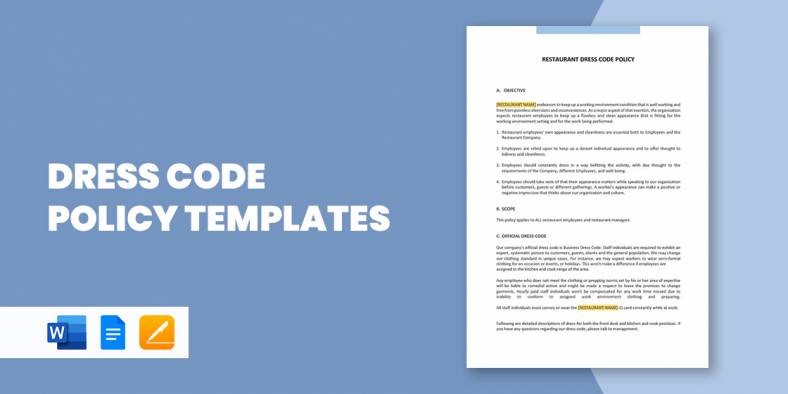
A dress code policy is defined as a set of guidelines to make it easy for the employees to know…

A sales commission policy fulfills the policy of establishing responsibilities for setting commission rates and to define the point at…

A confidentiality policy implies individual correspondence or data identifying with an association’s business that is obscure to general society and…

The dividend policy is a financial decision that indicates the balance of the firm’s wages to be paid out to…

The payment policy is the set of rules or directions that guides a customer to make the bill payment templates.…

Bonus Policy can be referred to as the protocol formulated in an organization based on which the employees are given a…

Recruitment policy is the practice that a company exhibits while hiring employees. It a statement that outlines the rules and…